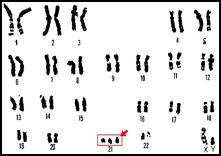VI. Answer the following questions. Use all information given before
1. If a diploid organism has two different alleles for the same gene, is it homozygous or heterozygous?
2. What is the difference between the genotype and the phenotype of an organism?
3. Is weight in humans an example of continuous variations or discontinuous variations?
4. What is a mutagen?
5. Are mutations harmful or beneficial?
6. What is variation and what does it result from?
7. Could you give an example of gene mutations?
8. Why are beneficial mutations of immense importance?
9. When do chromosome mutations happen?
10. What is a haploid organism?
VII. Read and translate the short text without any dictionary:
Fact of life:
Mutations (changes in DNA) are the ultimate source of inherited variation. They can either arise spontaneously or be induced by agents called mutagens (such as X-rays, mustard gas, or ultraviolet radiation). The rate of spontaneous mutations varies for different genes and in different organisms. Each human gene has about a one in 100 000 chance of mutating. Mutations are usually thought of as harmful, and they often are. However, because we have so many genes, even the healthiest of us probably have at least a few spontaneously mutated genes hidden in the recessive form which do not affect us. X-rays and other mutagens increase the mutation rate, and the higher the dosage of radiation, the higher the rate of mutation.
VIII. Food for thought:
Twins (pairs of children born at the same time) may be dizygoticor monozygotic.
Each dizygotic or non-identical twindevelops from a different egg and may be of a different sex. Monozygotic twins or identical twinsdevelop from one egg and contain identical genetic information; they are always of the same sex. Suggest how the study of twins may be used to distinguish between the effects of inheritance and environmental factors on the variations of an individual character.
IX.Translate into English using all the active possible:
1. Мутации – это основная причина наследственных генетических изменений.
2. Каждый человеческий ген имеет шанс мутировать как 1 к 100000.
3. Рентгеновские лучи и другие мутагены увеличивают уровень мутирования и чем выше доза радиации, тем выше уровень мутирования.
4. Большинство выраженных мутаций вредны.
5. Однако, случайно мутации бывают полезными, меняя фенотип таким образом, что организм имеет больше шансов выживать и воспроизводиться.
6. Различия между особями одного вида называются генетической изменчивостью.
7. Измеряемые физические и биохимические характеристики организма, будучи видимыми или нет, составляют его фенотип.
8. Характеристики, такие как человеческий рост и вес, показывают непрерывную изменчивость, и они обычно определяются большим набором генов и ощутимым (заметным) влиянием окружающей среды.
9. Генотип определяет потенциал организма, в то время как факторы окружающей среды, в которой он существует, определяют, до какой степени этот потенциал будет реализован.
10. Мутация – это изменение в количестве или структуре ДНК.
11. Мутации могут происходить спонтанно или быть вызваны факторами окружающей среды (химические препараты, рентгеновские лучи, вирусная инфекция).
12. Многие мутации выражаются в изменении формы белка, что приводит к его неправильному функционированию.
13. Мутации, которые поражают большие секторы генов, и хромосомальные мутации часто являются смертельными.
14. Однако, полезные мутации являются сырьевым материалом для эволюции новых видов путём естественной селекции (естественного отбора).
X. Meet essential targets reflecting the following issues:
1. Define the following genetic terms: allele; homozygous; heterozygous; dominant; recessive; polygenic
2. Distinguish between genotype and phenotype
3. Distinguish between continuous variation and discontinuous variation
4. Explain how mutations contribute to variation.
Text 4.2. Down's Syndrome And Genetic Screening

■ Essential targets:
By the end of this text you should be able to
· explain how Down’s syndrome arises;
· compare the main features of amniocentesis and chorionic villus sampling;
· discuss the role of a genetic counselor.
Pre-reading
■ Try and answer the following questions. Then check your answers by reading the text.
1. What do you know about Down’s syndrome?
2. Who and what is the syndrome named after?
3. What do children with Down’s syndrome look like?
Exercise A. Match the words with their definitions:
| 1. | disability | A. | a fault or a lack of something that means that something is not perfect |
| 2. | disease | B. | a small part or amount of something that is examined in order to find out something about the whole |
| 3. | defect | C. | happening or done without being planned or organized |
| 4. | to prevent | D. | to receive money, property etc. from someone after they have died |
| 5. | to inherit | E. | the final result of a meeting, discussion, war etc., especially when no one knows what it will be until it actually happens |
| 6. | to observe | F. | to stop something from happening or stop someone from doing something |
| 7. | sample | G. | the act of ending something or the end of something |
| 8. | spontaneous | H. | to and notice something; to watch something or someone carefully |
| 9. | outcome | I. | a physical problem that makes someone unable to use a part of their body properly |
| 10. | termination | J. | an illness or unhealthy condition in your body, especially one caused by infection |
■ Read the given text and make your essential assignments:
